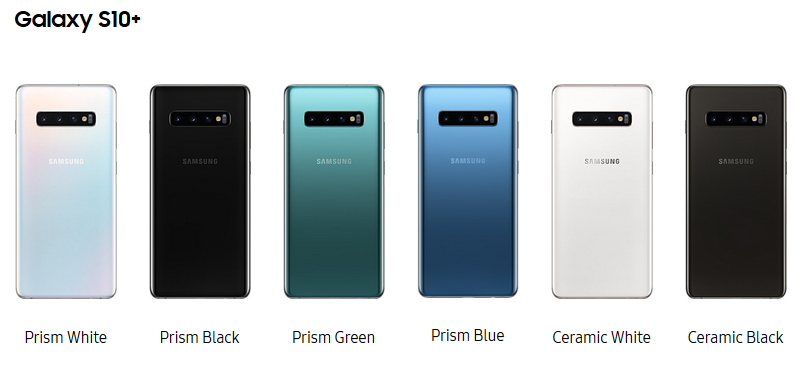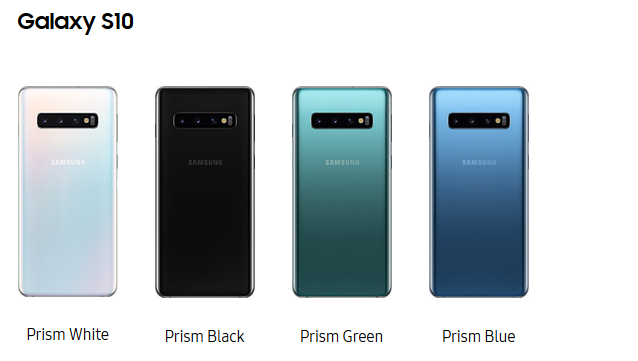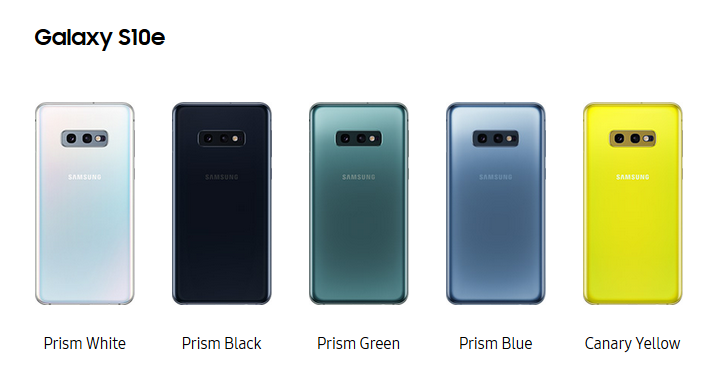Samsung Galaxy S10 Phones: 1TB Storage, 12GB RAM, in-screen fingerprint scanner and 5G

With the Galaxy S10, Samsung celebrates its 10th anniversary Galaxy S phone by going big and bold. How bold? Each of the four new Galaxy S10 models is more impressive than the last: there's the cheaper S10e, the Galaxy S10, S10 Plus and Galaxy S10 5G, the brand's first 5G phone.
All three devices have a few things in common: Power Share reverse
wireless charging, hole punch front-facing cameras, HDR10+ compatible
Dynamic AMOLED displays, and the Snapdragon 855/Exynos 9820 SoC. The
Galaxy S10e is the lowest priced model with a flat 5.8-inch display,
side fingerprint scanner, dual rear cameras, and it comes in the widest
arrangement of colors. The Galaxy S10 is the middle of the bunch with a
curved 6.1-inch display, ultrasonic in-display fingerprint scanner, and
triple rear camera setup. The Galaxy S10+ is the big brother to the
other phones. It comes with a 6.4-inch curved Dynamic AMOLED display,
ultrasonic in-display fingerprint reader, a dual front camera punch hole
setup, and triple rear cameras.
This is Samsung seeking to whip up excitement, roar back in sales and defend its title as the world's top smartphone brand. But the Galaxy S10 phones also represent a quest for perfection.
What does "perfection" mean to Samsung in 2019? An edge-to-edge screen with teeny-tiny bezels. The (remarkable) ability to wirelessly charge another device. An Infinity-O display that cuts a small circle (or oval) to make room for front-facing cameras. The world's first ultrasonic in-screen fingerprint reader, which unlocks the Galaxy S10 using sound waves. Up to four rear cameras. Up to 1TB of built-in storage. The all-new One UI. Android Pie. A cutting-edge Snapdragon 855 processor. And, in one case, 5G capabilities.
Samsung also lays claim to a screen advancement that reduces blue-light emissions, which studies have shown can slow or halt the production of melatonin, the hormone that signals our brain that it's time for bed.
Dimensions and weights


-260x260w.png)





-260x260w.jpg)









-260x260w.jpg)



-260x260w.jpg)
































-190x190w.png)





-190x190w.jpg)
















Leave a Comment